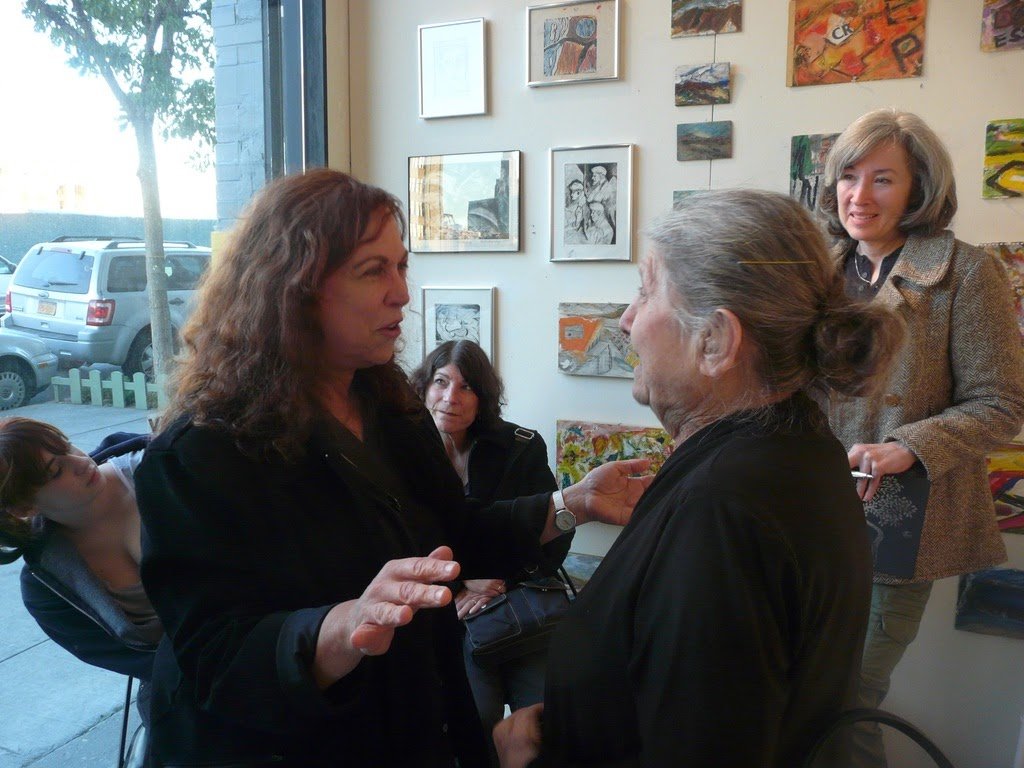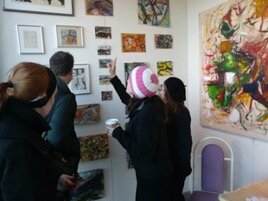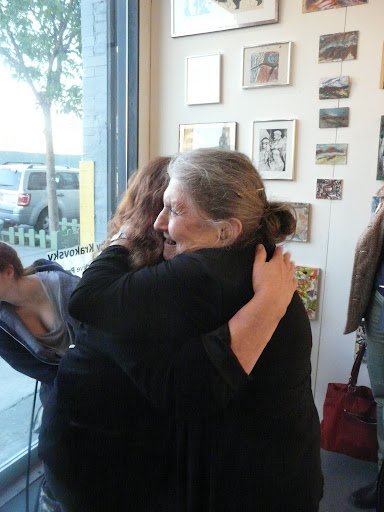The Retrospective Project
Soapbox Gallery, Brooklyn, NY
How to organize a retrospective exhibition in your own community
Do your research. Ask people you know in your community. Network to find the right artist; keep in mind this is a gift to them and to your community as well. Find someone who has had very little visibility but has an extensive body of work done over a period of many years. You may know them already. Someone’s grandmother or grandfather, a friend of a friend. Remember the artist needs no provenance, no showing history, no particular knowledge of art theory or the workings of the art world to participate in this project.
The artist. Once you have decided on the artist, you will need to arrange a studio visit to select the works to be exhibited. Ask the artist for a list of the works to be exhibited with titles (if there is no title, list as untitled), medium, size, and year. You may need to help with this or write the list for them. If they don’t remember the details, list what you have. You will also need to discuss sale prices. Ask them to organize a list of family and friends they want to invite via email or snail mail.
Find the venue. This can be a traditional gallery or an alternative space: an empty store that might be available to rent for one month. Be a visionary. There are many alternative spaces that would be wonderful for an exhibition—a church, an empty office, an available room in a school, a restaurant, even an empty home. Explain your project to the owner or representative of the location and ask if they would be willing to donate the space. Be bold. You never know unless you ask. If you see a space with a For Rent sign, call and ask if you can use the space for a month. There are numerous ways to go about this. Once you have secured your exhibition space, decide on the date, length of time for the exhibition (one month is a suggested length), the time and days the exhibition will be open. Also decide the date of the opening and/or closing reception.
Curating your exhibition: There are many ways to organize an exhibition (curate). One is chronological order; another is to organize by medium, for example, hang all drawings together. You can do this yourself or get a volunteer from a local art school. An art student (studio, art history, etc.) might be able to get credit for participating in a project like this.








You will need volunteers for the following tasks:
Keeping an inventory of the work to be exhibited.
Shipping and packing the work (use someone’s car, van or truck to move the work to the exhibition space). Use your common sense when packing the work for transport. Pack the work as you would pack dishes— carefully.
Installing and deinstalling the work and delivering it back to the artist.
Administrating—Type the price list, artist’s statement and bio. Make sure that there are enough copies of the price list, artist statement, exhibition statement, artist’s bio, etc., for the entire course of the show. These should be offered to all guests and placed in a visible location to be taken by any interested visitor. Also label everything. Send press releases and invitations. Post the exhibition on social media sites.
Sitting (one volunteer or two to take turns) in the gallery/alternative space every day during the show to be a guide to the artist’s work. A suggested gallery schedule would be from 11AM to 6PM. They should be willing to pass out information and answer any questions about the artist and the retrospective project.
Posting the show online and starting a blog for the artist. Please send me any information so I can post under the retrospective project on my blog as well.
Framing the work—Not all work needs to be framed. If you can’t afford to frame them, works can be hung with pushpins, clips, etc. You can also buy very inexpensive frames at places like Kmart.
Preparing and sending invitations—The invitation should include the name of the artist and the title of the exhibition, the location and address of the exhibition, the dates and time the show will run, and a contact name and number. Also list the date and time of the opening and/or closing reception. The invitations can be sent by both email and snail mail.
Writing a press release and sending it out in advance of the exhibition. Research what local magazines/newspapers/weekly publications/online sites might be interested and find out how to submit an event. Get the word out by email, word of mouth, social networking sites, and by dropping off invitations in public spaces where allowed (see The Retrospective Project example).
Writing a bio for the artist (see The Retrospective Project example).
Writing an exhibition statement (see The Retrospective Project example).
Making sure a guest sign-in book and pen are in a place where guests can easily find them. Ask guests to sign in and write something to the artist. This is a log for the artist, a list of those who came to celebrate their work. It will be a nice remembrance for them once the show is finished.
Labeling all the artworks. Include name, title of work (if untitled, just put “Untitled”), date work was made, medium, and then size.
Example: Jane Smith “A Summer Day” 2002 Watercolor on paper 12” x 12”
These should be placed consistently in the same way. If you want to put them on the bottom right of a drawing, they should all be placed on the bottom right of every artwork. A 12-point text works well for a label. You can also have the name of the artist and title of the exhibition printed for the window or door.
Arranging an opening and possibly a closing. This is so all the artist’s family, friends and public can honor and celebrate the artist and their artwork. Plan to provide cheese, wine, snacks or anything you choose to serve, as well as napkins and a tablecloth. Have one or two volunteers manage the food and drink table during the opening/closing. Flowers are a nice touch.
Documenting—Using both video and photography, document the opening and the exhibition. Take pictures of the work. If you decide to do a video, it can be posted later on a blog or on a site like YouTube. This way the artist’s work continues to be seen and appreciated long after the show. Please submit the documentation and written material to me and I will post it on the Retrospective Project section of my blog. You can email me at ckrakovsky@msn.com.
Getting donations for the space, food, drinks and services. In exchange, offer to list their name on the invitation, or any relative sites, as “donated by.” There are also sites where you can submit a proposal and ask for donations.
Organizing sales—A general suggestion for sales is that all works must be paid for while the exhibition is up and the buyer agrees to pick up the work on the last day of the exhibition.
Thank everyone involved and especially yourself for caring to honor the life and work of an artist in your community. You did something wonderful for a deserving artist who may not ever have had this opportunity without you.